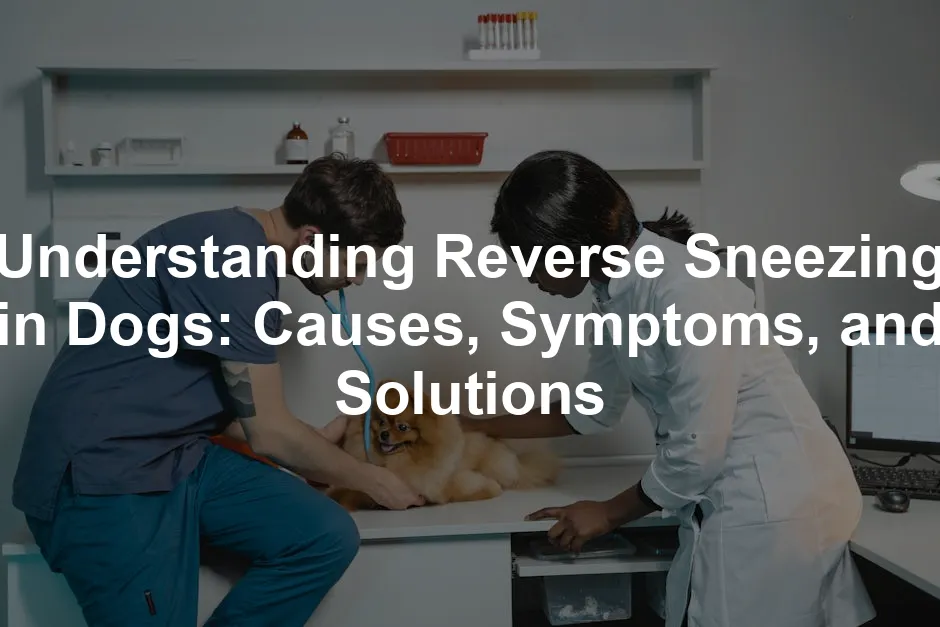Introduction
Have you ever heard your dog making odd snorting noises? That’s likely reverse sneezing! It’s a common phenomenon among dogs and can often cause alarm for pet owners. This article aims to inform and reassure you about this curious condition.
To keep your furry friend happy and healthy, consider investing in the PetSafe Healthy Pet Food Station. This automatic feeder ensures your dog gets the right amount of food, reducing the chances of them eating too quickly and triggering reverse sneezing episodes.

Summary and Overview
Reverse sneezing, or paroxysmal respiration, occurs when dogs rapidly suck air through their noses. This reflex action usually results from irritation in the throat or nasal passages. It’s important to note that reverse sneezing is generally normal and harmless.
Common triggers include allergens like pollen and dust, excitement, or even eating too quickly. Symptoms often manifest as loud snorting sounds while the dog extends its neck and appears to struggle with breathing. Recognizing reverse sneezing is crucial for distinguishing it from more serious respiratory issues.
Understanding the triggers of reverse sneezing can help you manage your dog’s health effectively. bee pollen for dogs is one of the common allergens that may contribute to this condition.
Speaking of allergies, if your dog is struggling with pesky pests, consider using Vet’s Best Flea and Tick Home Spray. This natural solution can help keep your home pest-free, reducing the likelihood of reverse sneezing episodes triggered by allergens.
What is Reverse Sneezing in Dogs?
Reverse sneezing, also known as paroxysmal respiration, is when a dog inhales sharply through its nose, creating a loud, snorting sound. Unlike regular sneezing, which expels air, reverse sneezing draws air in. During an episode, the dog typically stands still, extends its neck, and may appear distressed even though they’re not in danger.
This phenomenon is more prevalent in smaller breeds and brachycephalic (flat-faced) dogs. For instance, breeds like pugs and bulldogs are particularly prone to reverse sneezing due to their anatomical structures. The noise can be mistaken for choking, which adds to the concern among pet owners.
Episodes may last from a few seconds to a minute, after which dogs return to their normal behavior. Most dogs experience occasional reverse sneezing without any underlying health issues. Observing your dog’s behavior during these episodes can help you identify and manage the condition effectively.

While you’re observing your dog, why not treat them to a fun distraction? The ZippyPaws Squeaky Dog Toy can keep them entertained and provide a great outlet for their energy, helping to reduce stress during those sneezing episodes.
Why Do Dogs Reverse Sneeze?
Reverse sneezing occurs when dogs suck air rapidly through their noses. This behavior is often a response to irritation in the throat or nasal passages. Common irritants include dust, pollen, and smoke. These particles can trigger the reflex, making your dog reverse sneeze to clear their airways.
Excitement can also be a factor. For instance, a dog might reverse sneeze after playtime or when they see a favorite person. Eating or drinking too quickly can lead to episodes too. Certain breeds, especially brachycephalic ones like pugs and bulldogs, are more prone to this condition due to their unique anatomy.
Statistics show that smaller dogs under 15 kg are more susceptible to reverse sneezing. Nasal mites and allergens, such as cleaning products or fragrances, can also contribute. Monitoring your dog’s environment can help minimize these irritants and reduce episodes of reverse sneezing.
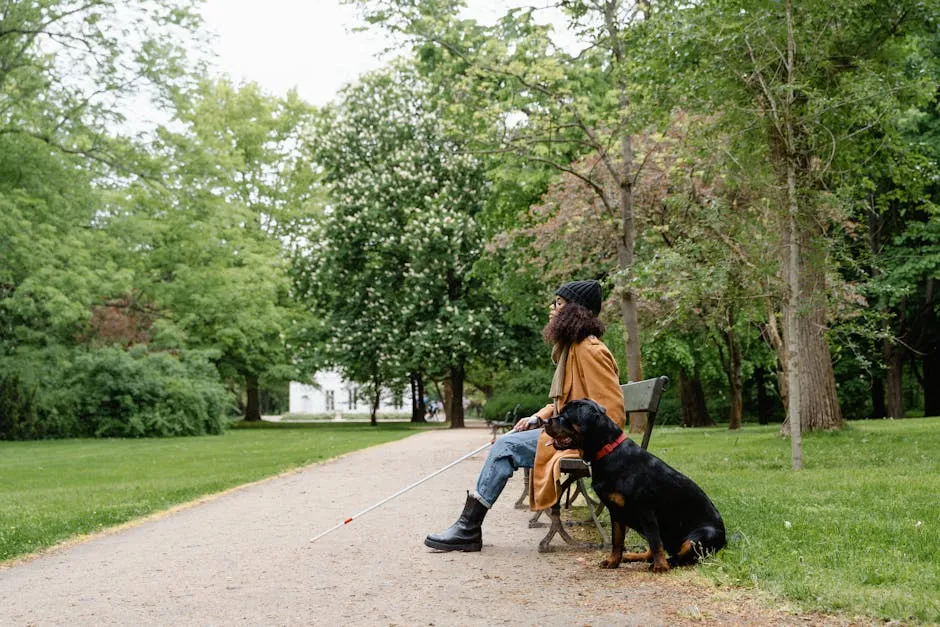
Consider investing in a good vacuum cleaner to keep your home free of dust and allergens. The Bissell Pet Hair Eraser Vacuum is specifically designed to tackle pet hair and dander, ensuring your furry friend has a clean environment to avoid sneezing fits.
Symptoms of Reverse Sneezing
During a reverse sneezing episode, you’ll notice some distinct signs. Your dog will often extend its neck and make loud snorting sounds. They may stand still, with their mouth closed and nostrils flaring. These episodes typically last from a few seconds to about a minute.
It’s crucial to differentiate reverse sneezing from choking. While reverse sneezing can sound alarming, it is usually harmless. In contrast, choking may involve panic and visible distress. If your dog seems to struggle for more than a minute or exhibits other symptoms, seek veterinary care immediately.
Recording episodes can be helpful for your vet to assess the situation. This documentation ensures that you can provide accurate information about frequency and duration. Being vigilant about these symptoms can help you keep your dog healthy and happy.

How to Help During an Episode
Witnessing your dog reverse sneeze can be alarming. However, there are effective ways to assist them. First, remain calm; your demeanor can help soothe your pet. Gently stroking your dog’s neck can provide comfort during the episode. This action may help them feel more secure and relaxed.
Another technique involves lightly covering your dog’s nostrils for a few seconds. This can stimulate swallowing, which often alleviates the reverse sneezing reflex. You can also try blowing softly into their face. This encourages a swallow and may help clear the irritants causing the discomfort.
If your dog seems anxious, distractions can work wonders. Offering a favorite toy or treat can shift their focus away from the episode. Ensure they’re in a calm environment to help keep stress levels down. Keeping your dog hydrated can also ease throat irritation after an episode. Remember, most episodes last only a minute or so, and your support can make a significant difference.
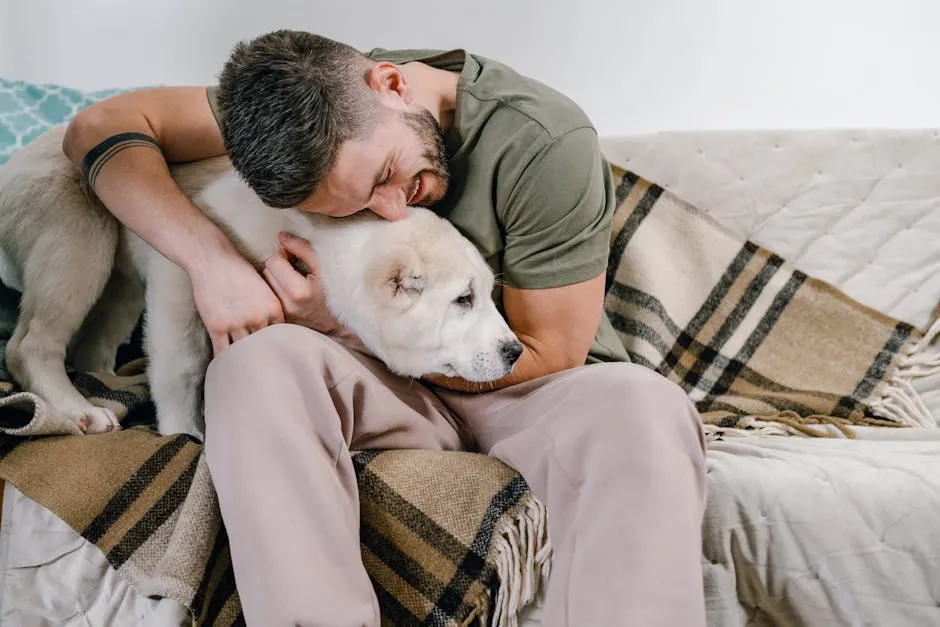
Speaking of keeping your dog occupied, a KONG Classic Dog Toy can be a great distraction. Stuff it with some peanut butter, and your dog will be too busy to notice any sneezing! Plus, it’s a great way to keep them mentally stimulated.
When to Consult a Veterinarian
While reverse sneezing is usually harmless, there are situations when a vet visit is necessary. If your dog experiences frequent or prolonged episodes, it’s time to seek professional advice. Pay attention to any signs indicating potential underlying conditions. These may include excessive drooling, labored breathing, or lethargy following an episode.
If your dog shows any unusual behavior, such as persistent coughing or difficulty breathing, consult your veterinarian immediately. They might perform diagnostic tests to rule out serious issues like a collapsing trachea or nasal tumors. Common tests include X-rays, rhinoscopy, or blood work, which help assess your dog’s overall respiratory health.
Regular veterinary check-ups are essential for all pets, especially if you notice frequent reverse sneezing. Monitoring your dog’s health can help catch any potential concerns early on. Always prioritize your dog’s well-being and reach out to a vet if you’re uncertain about their condition.
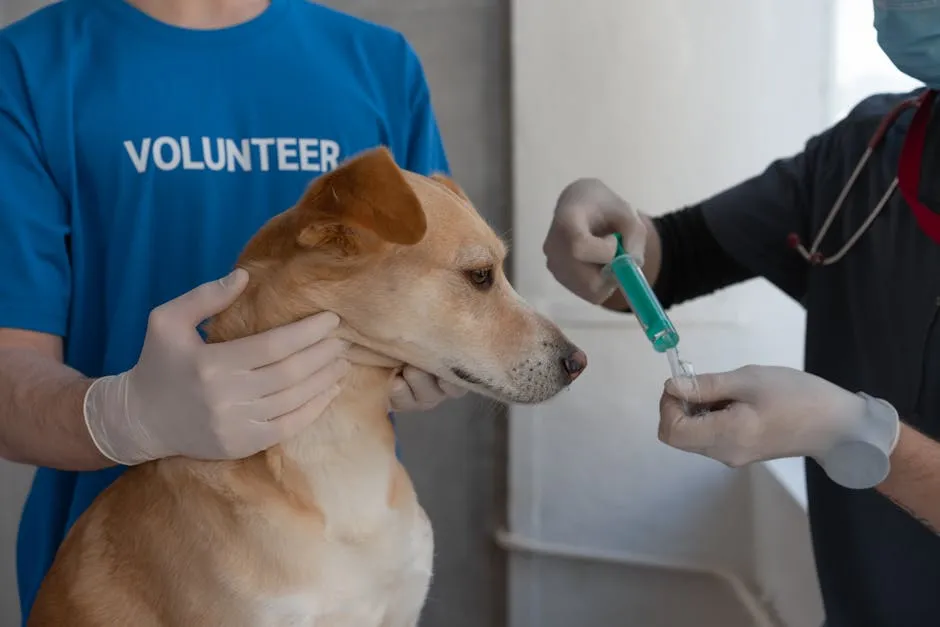
Treatment Options for Reverse Sneezing
If your dog experiences frequent or severe reverse sneezing episodes, it’s essential to explore treatment options. While most cases are benign, some may require intervention. Home remedies can often be effective. Antihistamines, like cetirizine, can alleviate symptoms related to allergies. Throat soothing techniques, such as gently massaging the throat, can also help calm your dog during episodes.
In more severe cases, surgical intervention might be necessary. This is especially true for dogs with anatomical issues, such as an elongated soft palate. A surgical procedure to shorten the soft palate can reduce the frequency of reverse sneezing episodes.
Statistics indicate that about 80% of dogs respond well to antihistamines for allergy-related reverse sneezing. However, if symptoms persist or worsen, consulting a veterinarian for a tailored treatment plan is crucial. They can assess your pet’s condition and recommend further diagnostic tests if needed.

Preventive Measures
Preventing reverse sneezing episodes is often possible through environmental management. Reducing allergens in your dog’s surroundings can significantly minimize triggers. Regular cleaning helps eliminate dust and airborne irritants. Use pet-safe cleaning products to avoid harsh chemical exposure.
Create a pet-friendly environment by avoiding strong fragrances and smoke. Keeping your home well-ventilated can also aid in reducing irritants. For dogs prone to reverse sneezing, consider using an air purifier like the PetSafe Air Purifier. It can help filter out allergens and keep the air fresh for your furry friend.
Statistics show that homes with regular cleaning practices see a 30% decrease in allergens. By implementing these preventive measures, you can help ensure your dog remains comfortable and healthy. Always strive to maintain a clean and safe space for your furry friend.
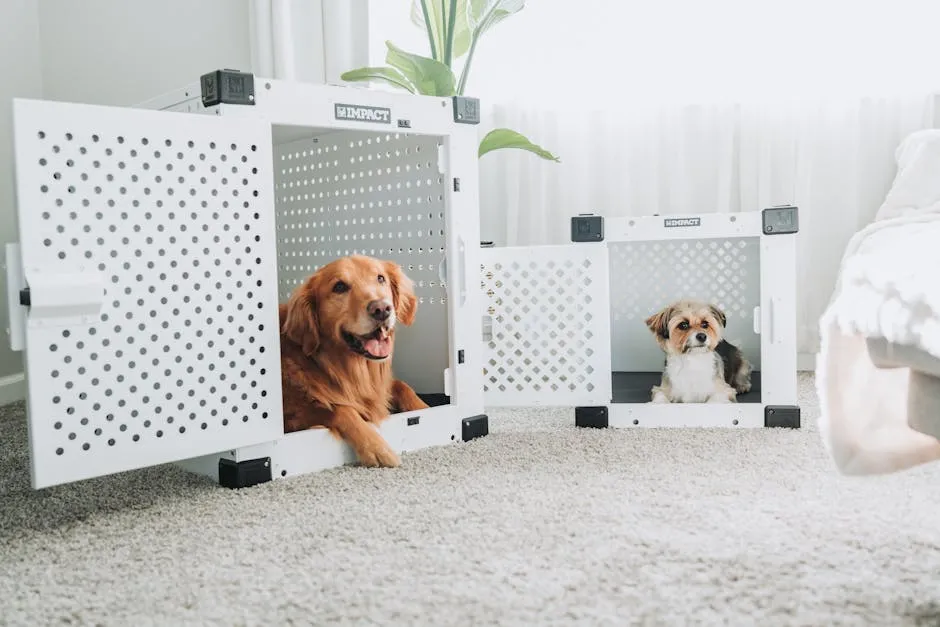
Conclusion
In this post, we discussed reverse sneezing in dogs, a common yet often alarming phenomenon. This involuntary action occurs when a dog rapidly inhales air, producing a distinctive snorting noise. While it can be concerning for pet owners, reverse sneezing is generally harmless and usually resolves quickly. It’s essential to monitor your dog during these episodes and note any changes in frequency or severity.
To ensure your dog is well taken care of, consider investing in a PetFusion Ultimate Dog Bed. A comfortable bed can help your dog relax and recover from any irritants that may cause reverse sneezing.
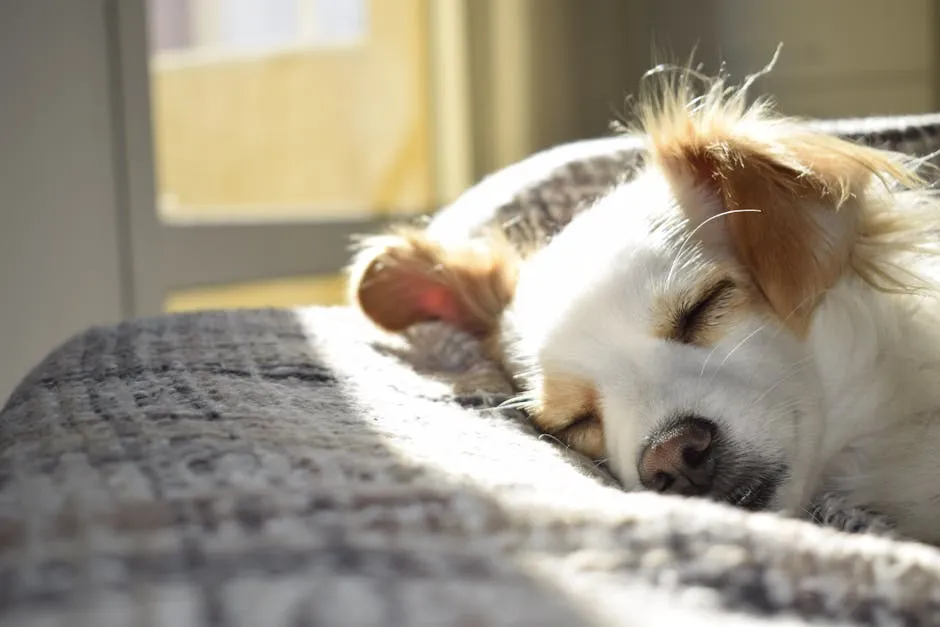
FAQs
What triggers reverse sneezing in dogs?
Reverse sneezing is often triggered by various irritants. Common culprits include pollen, dust, and smoke. Other triggers may involve excitement or eating too quickly. If your dog is exposed to these irritants, it might cause a reverse sneezing episode.
Is reverse sneezing in dogs dangerous?
Typically, reverse sneezing is not dangerous. Most dogs return to normal behavior shortly after an episode. However, if your dog experiences frequent episodes or shows signs of distress, it’s best to consult a veterinarian.
How long do episodes of reverse sneezing last?
Episodes usually last between 30 seconds to a minute. They are often infrequent, with some dogs experiencing them only occasionally. If you notice prolonged episodes, it’s essential to seek veterinary advice.
Should I give my dog Benadryl for reverse sneezing?
Consult your veterinarian before giving your dog any medication, including Benadryl. While it may help with allergy-related symptoms, it’s crucial to determine the underlying cause of reverse sneezing first.
Which breeds are more prone to reverse sneezing?
Smaller breeds and brachycephalic dogs, like pugs and bulldogs, are more susceptible to reverse sneezing. Their unique anatomical structures can contribute to this phenomenon. Always monitor your dog for any concerning signs and consult a vet if needed.
Finally, if you want to be prepared for any situation, consider having a Dog First Aid Kit on hand. It’s always better to be safe than sorry!
Please let us know what you think about our content by leaving a comment down below!
Thank you for reading till here 🙂
All images from Pexels

